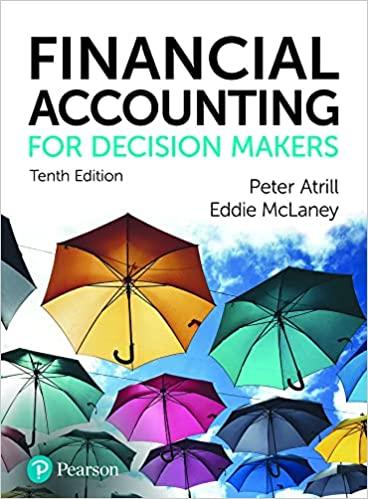Answered step by step
Verified Expert Solution
Question
1 Approved Answer
The answer is 378,175 (with margin: 3,782). Please show me how to get to this answer by using the formula as much as possible specially

The answer is 378,175 (with margin: 3,782). Please show me how to get to this answer by using the formula as much as possible specially the NPW part as well.
"A corporation is trying to decide whether to open a new factory outlet store. The store will have high, medium, or low demand. Before it decides whether to open the store, the corporation can pay $17,000 immediately for a market survey. The market survey can predict 'high, 'medium,' or 'low' demand. If the actual demand of the store will be high, there is a 0.63 probability the survey will predict 'high' demand, a 0.2 probability the survey will predict 'medium' demand, and a 0.17 probability the survey will predict 'low' demand. If the store will actually have medium demand, there is a 0.23 probability the survey will predict 'high' demand, a 0.52 probability the survey will predict 'medium' demand, and a 0.25 probability the store will predict 'low' demand. If the store will actually have low demand, there is a 0.04 probability the survey will predict 'high' demand, a 0.37 probability the survey will predict 'medium' demand, and a 0.59 probability the survey will predict 'low' demand. If the corporation decides not to take the market survey, there is a 0.35 probability the store will have high demand, a 0.33 probability the store will have medium demand, and a 0.32 probability the store will have low demand. If the corporation decides to open a store, the immediate cost of opening the store is $411,000, and the store must remain open for exactly 3 years. If demand is high, the store will EARN $0.8 million for each year that the store is open. If demand is medium, the store will EARN $242,000 for each year that the store is open. If demand is low, the store will LOSE $101,000 for each year that the store is open. You should assume that demand remains the same for each year that the store is open. There is no salvage value, and you can ignore taxes. If the corporation decides not to open a store, the corporation has a net present worth = $0 minus the cost of the survey (if the corporation takes the survey). The corporation's MARR is 12%. The corporation will choose the alternative with the largest expected net present worth (NPW). What is the expected NPW of the best alternative?" "A corporation is trying to decide whether to open a new factory outlet store. The store will have high, medium, or low demand. Before it decides whether to open the store, the corporation can pay $17,000 immediately for a market survey. The market survey can predict 'high, 'medium,' or 'low' demand. If the actual demand of the store will be high, there is a 0.63 probability the survey will predict 'high' demand, a 0.2 probability the survey will predict 'medium' demand, and a 0.17 probability the survey will predict 'low' demand. If the store will actually have medium demand, there is a 0.23 probability the survey will predict 'high' demand, a 0.52 probability the survey will predict 'medium' demand, and a 0.25 probability the store will predict 'low' demand. If the store will actually have low demand, there is a 0.04 probability the survey will predict 'high' demand, a 0.37 probability the survey will predict 'medium' demand, and a 0.59 probability the survey will predict 'low' demand. If the corporation decides not to take the market survey, there is a 0.35 probability the store will have high demand, a 0.33 probability the store will have medium demand, and a 0.32 probability the store will have low demand. If the corporation decides to open a store, the immediate cost of opening the store is $411,000, and the store must remain open for exactly 3 years. If demand is high, the store will EARN $0.8 million for each year that the store is open. If demand is medium, the store will EARN $242,000 for each year that the store is open. If demand is low, the store will LOSE $101,000 for each year that the store is open. You should assume that demand remains the same for each year that the store is open. There is no salvage value, and you can ignore taxes. If the corporation decides not to open a store, the corporation has a net present worth = $0 minus the cost of the survey (if the corporation takes the survey). The corporation's MARR is 12%. The corporation will choose the alternative with the largest expected net present worth (NPW). What is the expected NPW of the best alternativeStep by Step Solution
There are 3 Steps involved in it
Step: 1

Get Instant Access to Expert-Tailored Solutions
See step-by-step solutions with expert insights and AI powered tools for academic success
Step: 2

Step: 3

Ace Your Homework with AI
Get the answers you need in no time with our AI-driven, step-by-step assistance
Get Started


